 How Do FlashLocks Work?
How Do FlashLocks Work?
FlashLocks may be opened in one of two distinct ways:
- By a pattern of flashing light emanated from the display of a smart phone or tablet
- By an infrared signal coming from a fob, CyberKey Flash, CyberKey Air2, or CyberKey Blue 3.
|
Flash access means sending a flashing light pattern that matches an expected
code. Each lock has thousands of flash pattern codes in memory distinct from other
FlashLocks. These flash codes are generated by CyberAudit-Web and programmed into the
FlashLock after the lock is added
and programmed.
After use and/or a period of time, the current code in the FlashLock "rolls" to
another code.
Variations of this rolling code technology are used with such products as residential garage door openers and automobiles. When the lock sees a flashing pattern that matches an expected code, it grants access to the lock. After FlashLocks are added to the system and programmed, CyberAudit-Web can send links for flash access to selected people. |
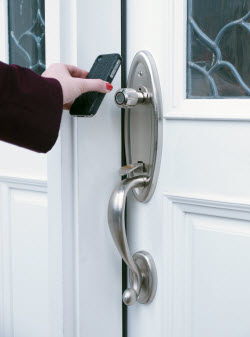
|
|
Clicking the link sends an access request to the server. The server sends a flashing web
page to the mobile device which the person holds up to the FlashLock's light detection
window. The lock will open after 4-6 seconds and record a flash access open event with
a date/time stamp.
CyberAudit-Web records the requests it gets for access to each FlashLock in its audit trails. Each request also helps the system to maintain synchronization with each lock so it can generate web pages that cause the user's browser to flash with a valid code. |
|
Troubleshooting Access by Flash Pattern - Why doesn't it open?
- FlashLock access code detection depends on detecting distinct and timely light pattern transitions from black to white and white to black. This detection can be hampered or distorted by other light sources and reflections. Hold the flashing screen of the device directly against the light detection window to deliver the clearest flashing signal. This is especially the case with FlashLocks as the device may be held a short distance from the FlashBox.
- To recognize a code, the FlashLock requires a strong white light to contrast with black. This generally requires high screen contrast on the mobile device. Many mobile devices allow you to shift the colors of the display to "warmer" colors and lower contrast to meet personal preference. In addition, they may also automatically reduce contrast at night or based on current ambient light conditions. Ensure that the mobile device delivers high screen contrast. The Flash Access app automatically ensures screen contrast is set to the maximum contrast level when it displays the flash pattern.
- From time to time, the FlashLock must re-calibrate itself due to changes in ambient light. An outdoor change from daylight to darkness and vice-versa is an example of this. Constantly changing lights like a strobe or florescent lighting in close proximity could cause the lock to be in frequent or ongoing re-calibration and inhibit its ability decode flashing from a mobile device.
Access by fob, CyberKey Flash, CyberKey Air2, or CyberKey Blue 3
| A fob, CyberKey Flash, CyberKey Air2, and CyberKey Blue 3 may be issued to people with access permissions to FlashLocks. These devices use close range infrared communications with the lock to transmit their serial number and an access code to the lock. This event is recorded in both the fob or CyberKey. It is also recorded in the FlashLock. | |
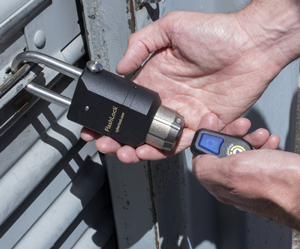
|
A fob IR transmitter/receiver is located on the button end of the key fob.
Don't cover it with your finger!
To open a FlashLock, point the key fob to the FlashLock's light detection window. Hold it in a direct line 1/2 to 6 inches away. Press the blue key fob button. It will light up. When the FlashLock sees the signal it will flicker its red LED briefly. When access is granted it flashes the green LED. Open the lock within 15 green flashes. After that time, the FlashLock flashes its red LED to indicate the access time has expired and it may no longer be opened. |
|
The IR transmitter/receiver on a CyberKey Flash or Air2is located inside the tip of the key.
Press the middle button
on the key to activate its selection menu. When FlashLock appears, press the middle button on the key.
The CyberKey will flash its red LEDs for up to 8 seconds while it seeks a FlashLock. Like the fob,
when the FlashLock sees the signal it will flicker its red LED briefly. When access is granted it
flashes the green LED.
Whether it opens the FlashLock or not, the CyberKey will emit sounds and show the results of the open attempt on its LED display. |
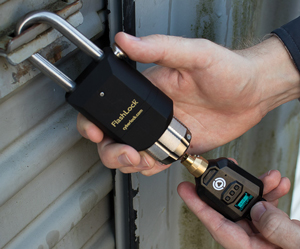
|
| Fobs, CyberKey Flash, and CyberKey Air2 use a distinct access code to gain access to a FlashLock. That access code is generated from CyberAudit-Web's cryptographic strength random number generator and loaded into the FlashLock when it is added to CyberAudit-Web. It is only loaded into a FlashLock or the fob when it is required for access to the FlashLock. | |
| Note: Devices like a monitor from a PC generate infrared noise which causes the lock to attempt to decode a signal. This may be indicated by random flashing of both red and green LEDs. which are not in response to a fob or CyberKey. If red and green LEDs are flashing when no fob or CyberKey Flash is being used, this could indicate a noisy light environment which increases drain on the battery of the FlashLock and could cause decoding problems. | |
Operating FlashLocks - The Home Position
| The Home position for FlashLocks affects their ability to lock and unlock. To ensure proper operation and behavior of the FlashLock, users should always return FlashLocks to the home position after use. | |
|
The FlashLock Padlock can only unlock when it is in the home position. It is in the home position
when the grey triangle on the knob is aligned with the cable bolt on the body of the padlock. On
FlashLock Padlocks manufactured in February 2019 and later have an enhanced indicator as shown in the
image to the right.
An internal spring loaded mechanism causes the knob to gently settle into the home position.
This can be felt as the knob is turned slowly. For best results return the knob to the home position prior to attempting Flash Access or presenting a fob or CyberKey. The FlashLock Padlock can also be unlocked by turning the knob slowly while the LEDs blink green after access is approved. This gives the internal mechanism enough time to sense the home position and unlock. |
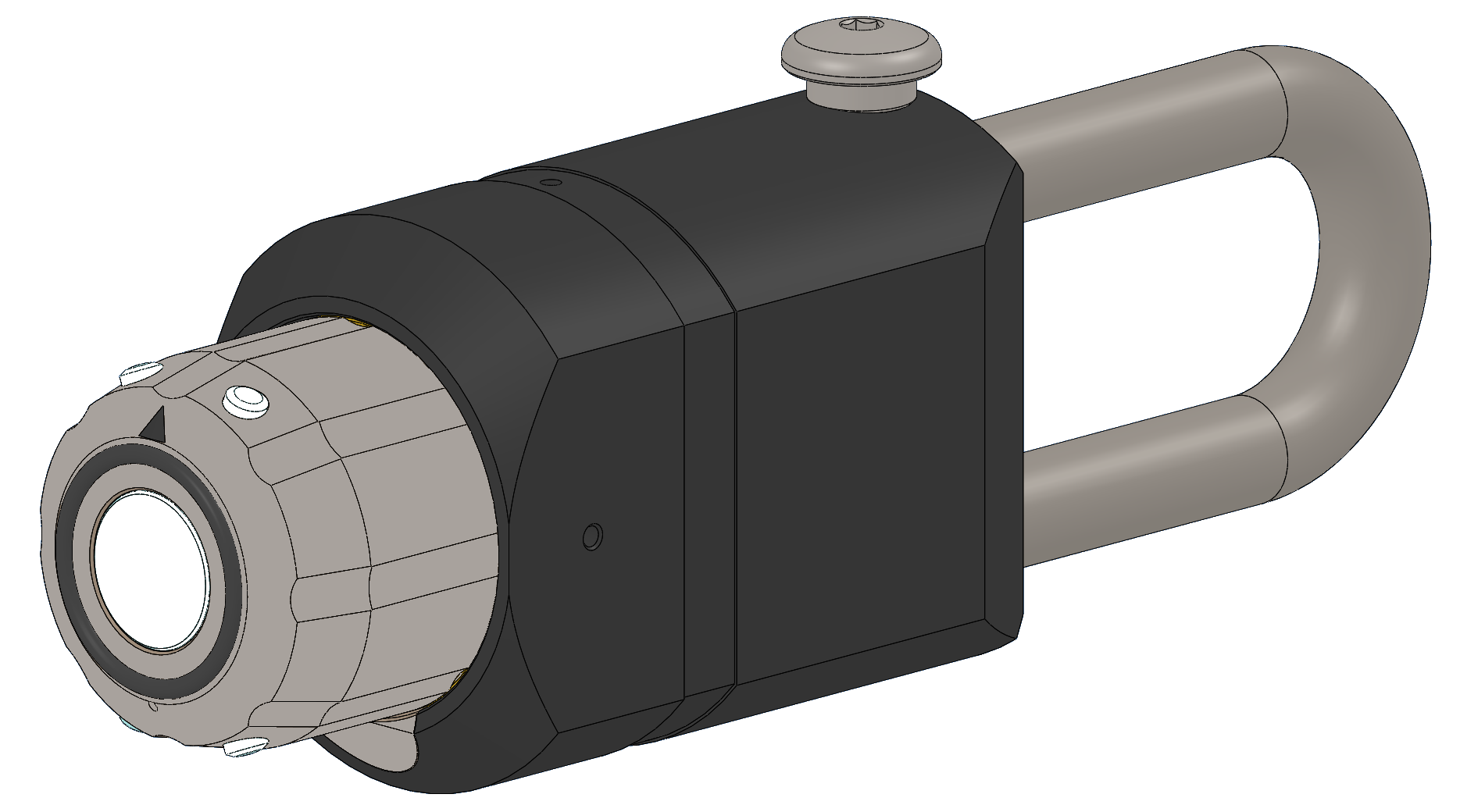 FlashLock Padlock with knob in the home position 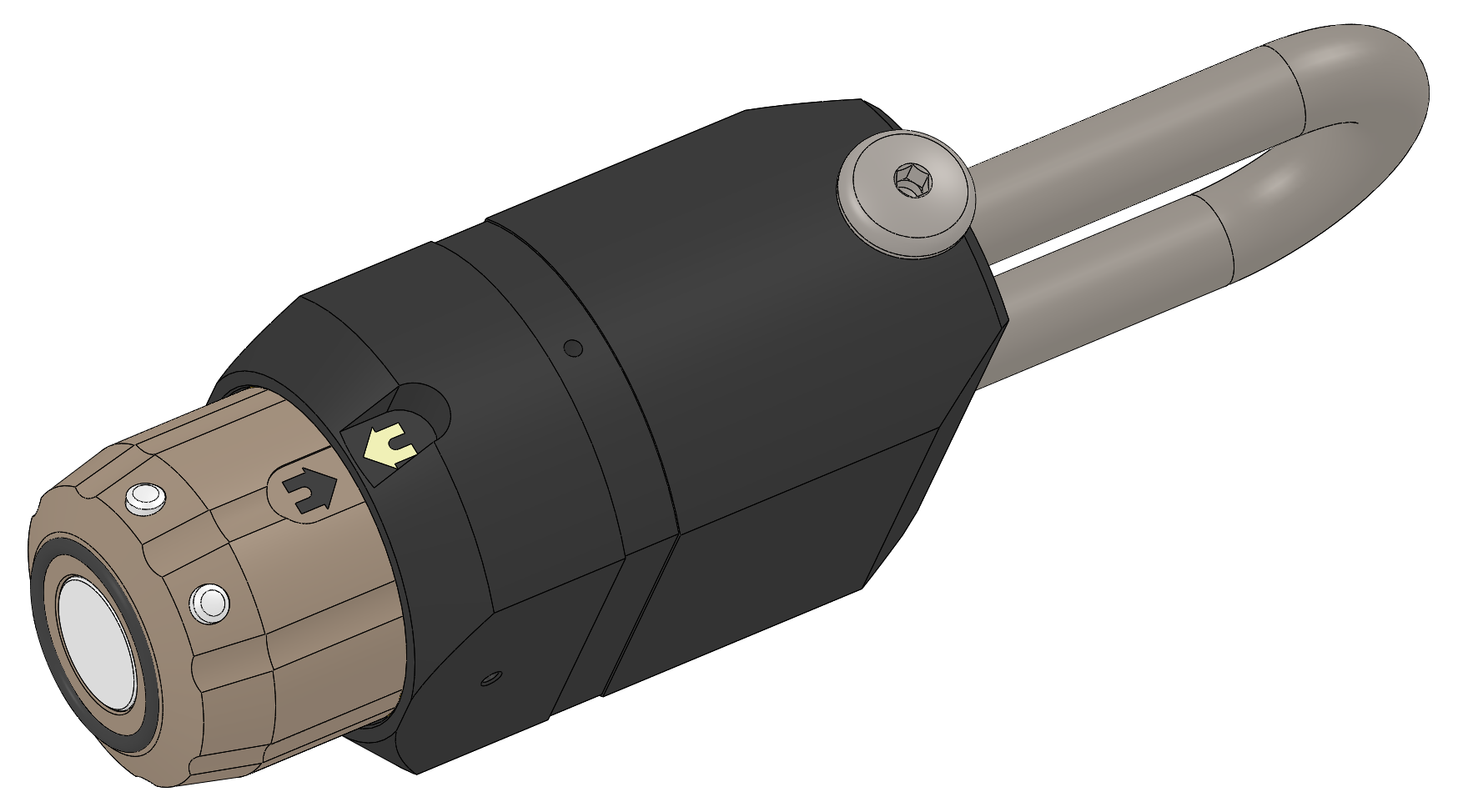 FlashLock Padlock with enhanced home position indicator |
|
Mortise(FL-M04) and Euro Half Profile(FL-PH30) FlashLocks are in the home position when the
grey triangle on the knob is pointing up and at the 12 o'clock position. They too have an internal
spring loaded mechanism that causes the knob to snap to the home position and can be felt as the
knob is turned slowly. Both of these FlashLocks must be in the home position to both lock and unlock. The FlashLock user must return these FlashLocks to the home position so the FlashLock can relock after use. This is analogous to turning a physical key back to the locked state on a lock prior to removing the key. When the LED's on a FlashLock blink red it indicates the FlashLock has successfully locked. |
 FL-M04 with knob in the home position 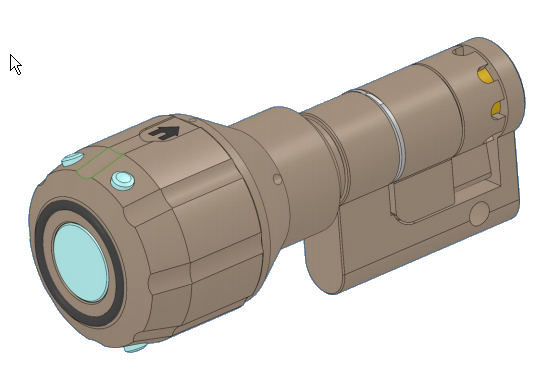 FL-PH30 with knob in the home position - 2020 design |
| Flashlocks operate with a CR123 lithium battery. The battery will typically last for one year or more with up to 10 open/close cycles per day. The battery life will be shortened if the FlashLock is in an environment of temperatures near or below freezing. The following battery manufacturer's chart illustrates the effect of cold temperatures on battery life. | |
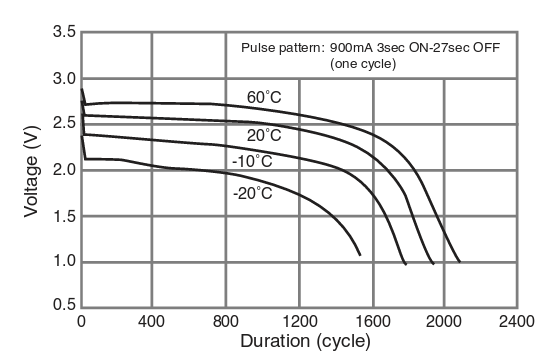
|
|
| A FlashBox ships with 4 alkaline batteries installed. Like FlashLocks, the batteries in a FlashBox will typically last for one year or more with up to 10 openings per day. However alkaline battery performance will severely degrade at temperatures near or below freezing. AA lithium batteries perform better in freezing conditions. The chart below is from a major battery manufacturer. It illustrates the difference in overall AA alkaline battery performance between constant temperatures of 21°C (70°F) and 0°C (32°F). | |
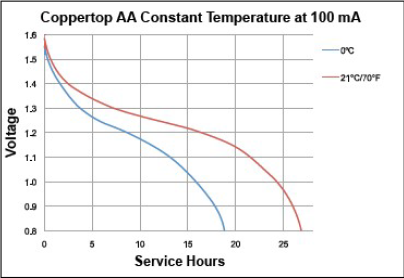
|
|
|
A FlashLock or FlashBox battery may be tested using the
Check Battery function in the
FlashLock Assistant applications. The LEDs on a FlashLock or FlashBox also indicate whether a battery is low. Locks with a low battery will flash their red LEDs once every 8-10 seconds. Those without a low battery condition will flash their green LEDs instead. |
|
| Fobs operate with a CR2032 button cell lithium battery. It will also operate for about one year with about 10 button presses per day. A button press every hour would shorten its life to about 6 months. | |
|
Documents for changing batteries: Replacing a battery on a mortise or profile FlashLock Replacing a battery on a padlock (original version padlocks) Replacing a battery on a padlock (current version padlocks) Replacing a battery on a fob |
FlashBox Documents: Replacing a battery on a FlashBox Jump starting a dead FlashLock battery Wall mounting a FlashBox Mounting a FlashBox on a door knob |
Additional links

